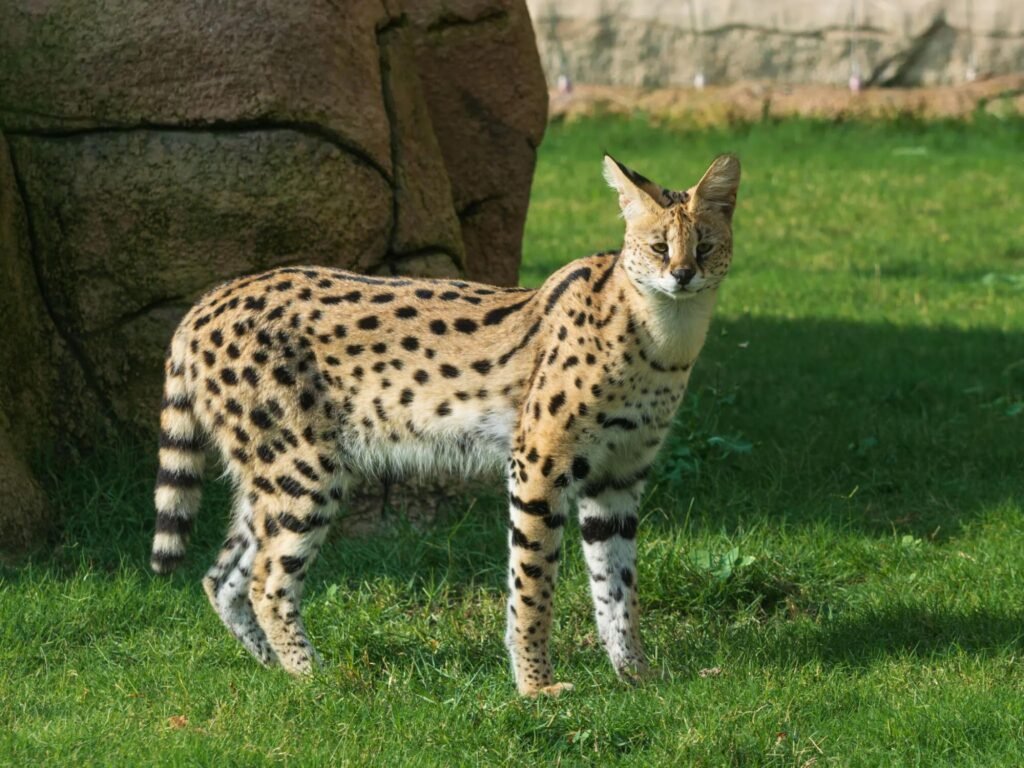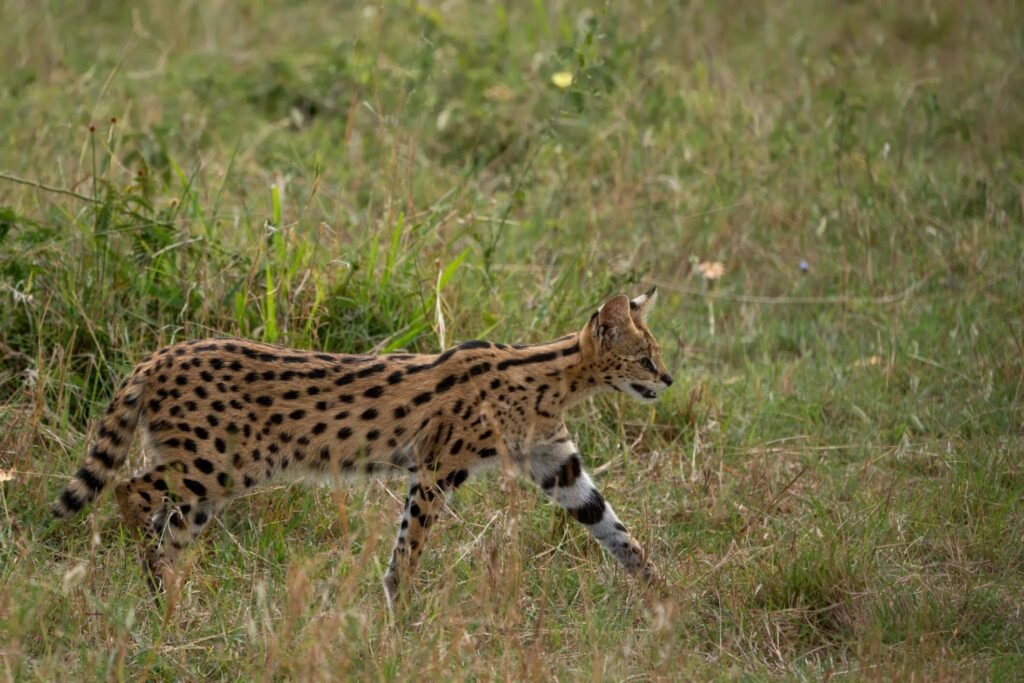
The serval, Leptailurus serval, is a medium-sized wild cat native to the savannas of Africa, known for its remarkably long legs, large ears, and striking spotted and striped coat. Its slender build, coupled with its disproportionately long neck and large ears, enables it to effectively locate prey in tall grass. The serval’s coat typically features bold black spots and stripes on a tawny or yellowish background, providing excellent camouflage in its grassland habitats. Unlike many other felines, servals are highly agile and possess an incredible leaping ability, often jumping several feet into the air to catch birds in flight. They are primarily solitary and crepuscular, hunting a wide variety of small prey, including rodents, birds, reptiles, and insects, often using their keen hearing to pinpoint their exact location.

Servals play an important ecological role as efficient predators in the African savannas and grasslands. By preying on a wide range of small animals, they help to control populations of rodents and other small herbivores, preventing potential overgrazing and maintaining the health of the grassland ecosystem. Their presence contributes to a balanced food web and supports the overall biodiversity of their habitats. Furthermore, as an indicator species, a healthy serval population often signifies a thriving grassland environment with sufficient prey availability. Therefore, the conservation of servals is crucial not only for the survival of this elegant and unique cat but also for the preservation of the delicate ecological balance within the vast and vital African savannas.
Every day, wild cats around the world face threats like habitat loss, poaching, and natural climate progression. But hope isn’t lost. With your support, we can protect these majestic animals and preserve their habitats.
Join our growing community of wildlife champions and help create a safer future for all 40 wild cat species.
Zoo-EV is a nonprofit organization dedicated to the protection and preservation of the world’s 40 wild cat species through education, community engagement, and conservation initiatives. Zoo-EV is recognized as a 501(c)(3) tax-exempt organization by the IRS, with the Employer Identification Number (EIN) 88-3636567.